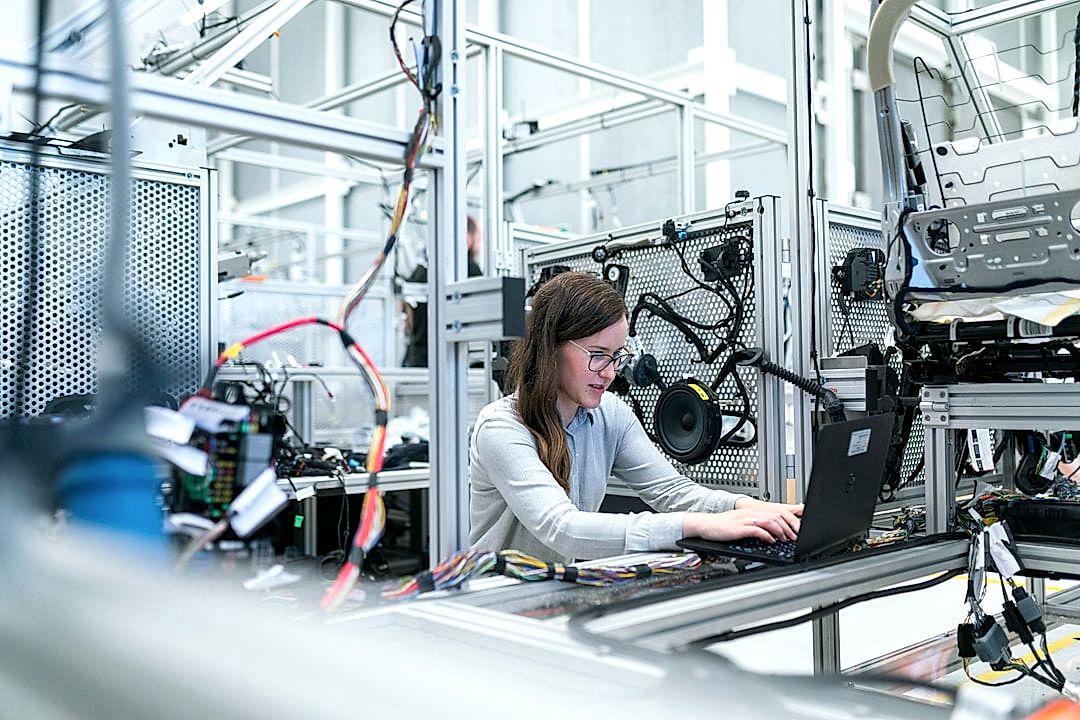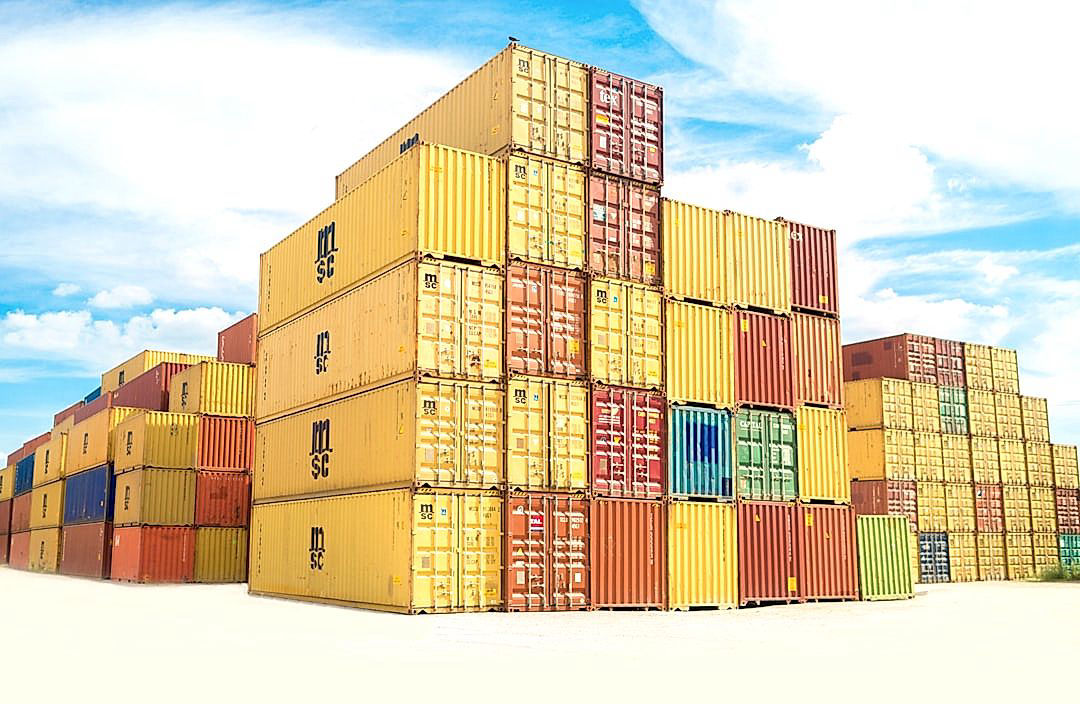In the dynamic and increasingly competitive sector of fresh produce, effective packaging management plays a critical role in maintaining product quality and enhancing consumer satisfaction.
With the growing emphasis on sustainability, efficiency, and waste reduction, it becomes imperative for businesses in this industry to adopt the best practices.
These strategies not only preserve the quality of the produce but also boost productivity and profitability.
However, finding the right solutions tailored to your specific needs can be challenging.
The following insights aim to provide a robust understanding of the various strategies and their potential benefits.
We will delve into the cutting-edge packaging methods that are transforming the fresh produce industry.
Contents
- Best Practices In Produce Packaging Management
- 1. Use sustainable, eco-friendly packaging materials
- 2. Ensure Clear, Legible Labeling of Contents.
- 3. Prioritize Product Protection for Transportation
- 4. Comply strictly with regulatory standards.
- 5. Integrate efficient packing for storage.
- 6. Utilize Packaging Technology Advancements
- 7. Regularly Review and Improve Packaging Strategies
- The Bottom Line
Best Practices In Produce Packaging Management
1. Use sustainable, eco-friendly packaging materials
Over the past decade, sustainability has become increasingly critical in every business aspect, including produce packaging management.
Implementing sustainable, eco-friendly packaging materials is no longer just a mark of good corporate citizenship but a necessary component of a successful packaging strategy.
Produce packaging has unique challenges as it requires materials that not only protect the produce but also extend its shelf life.
Traditionally, plastic has been the preferred choice due to its versatility and effectiveness in preserving produce, but it falls significantly short on sustainability.
The urgent need to reduce plastic waste has propelled the packaging industry towards discovering and embracing more sustainable alternatives.
Bio-based packaging, for instance, made from renewable sources like corn starch and mushrooms, have emerged as a promising solution with a significantly lower carbon footprint than plastic.
Such materials are not only compostable but also can be regenerated after use, contributing to the circular economy.
Another viable option is recyclable plastic, which can be reprocessed into new packaging, minimizing the reliance on virgin plastic and reducing waste generation.
Edible packaging has also been on the radar, using food-grade substances to create non-toxic, biodegradable, and in some cases, even consumable packaging.
However, transitioning to eco-friendly packaging materials cannot happen in isolation or overnight.
It needs to be complemented with well-planned collection and recycling systems to ensure that these materials don’t end up in landfills, thereby negating their eco-friendly attributes.
Apart from directly benefiting the environment, sustainable packaging also projects a positive brand image to consumers, many of whom now see sustainability as a crucial factor in their purchase decisions.
Companies can leverage this trend to not only enhance their product’s appeal but also influence consumer behavior towards more sustainable practices.
Nevertheless, it’s essential to balance sustainability with functionality.
Eco-friendly materials need to offer similar if not superior, performance compared to conventional materials in terms of protecting the produce, extending shelf life, and being cost-effective.
With continuous research and improvements in technology, the future of sustainable produce packaging holds immense potential for both businesses and the environment.
2. Ensure Clear, Legible Labeling of Contents.
In the realm of produce packaging management, one fundamental aspect that should never be overlooked is the importance of ensuring clear, legible labeling of contents.
Accurate labeling of produce packaging is a crucial factor in the communication between producers, suppliers, and consumers.
Not only does this practice provide necessary information about the product’s origin and ingredients, but it also plays a pivotal role in promoting product differentiation and brand recognition.
Transparent and easily comprehensible labeling plays a key role in building consumer trust and enhancing customer experience.
An illegible or misleading label could lead to product mishandling in transport or storage and ultimately, cause confusion on the part of consumers.
In the worst-case scenario, unclear labeling could even lead to serious health implications for consumers with specific dietary restrictions or allergies.
Clear labeling is, therefore, paramount to ensure the optimal handling of the product throughout the supply chain as well as to maintain consumer safety and satisfaction.
Moreover, according to most regulatory bodies like the USDA or the FDA, accurate and clear labeling of food products is a strict legal requirement.
Noncompliance with these regulations can result in significant legal penalties and damage to the company’s reputation.
Thus, being diligent about the accuracy and legibility of package labeling is not only a best practice but also a legal imperative for businesses engaged in produce packaging.
Furthermore, in this digital age, it is increasingly important to integrate barcode and QR code systems in product labeling.
These advanced labeling systems enable quicker, more efficient product tracking, inventory management, and can also provide consumers with instant access to a wealth of product-related information.
Finally, it is crucial to remember that labeling practices must be regularly reviewed and updated in accordance with evolving regulations, technology, and consumer preferences.
All in all, clear, legible labeling of contents is a cornerstone of effective produce packaging management and plays a multi-faceted role in consumer safety, regulatory compliances, brand recognition, and efficient supply chain management.
3. Prioritize Product Protection for Transportation
Safeguarding of produce during transportation is a critical aspect of packaging management.
Underlying vulnerabilities in raw fruits and vegetables make them highly susceptible to damage during transportation.
Using the right packaging materials and designs minimises the risk of physical damage, prohibiting bacterial contamination and prolonging the shelf life.
Designing packaging to counter these pressures effectively allows producers to maintain produce quality during transportation, ensuring that premium, fresh products reach the consumer.
The selection of packaging materials should be driven by factors such as durability, flexibility, and ease of handling during methods of transportation.
Companies should identify potential points of stress during transit and design protective packaging that specifically mitigates these concerns thereby enhancing product protection.
Moreover, using padded packaging can cushion produce against shocks and vibrations during transit.
A well-structured packaging system not only delivers intact produce but also saves costs on returned damaged goods and dissatisfied customers.
It’s also vital to consider climatic conditions during transportation.
Some products might be more vulnerable to temperature changes and may require insulated packaging to maintain freshness.
Materials such as polystyrene and vacuum insulation panels offer excellent thermal performance, maintaining product quality during transport.
Packaging should also feature adequate ventilation to prevent the build-up of moisture thereby reducing the risk of product deterioration.
Companies should develop and enforce strict guidelines for the loading and unloading process to ensure extra care is taken when handling produce.
Organisations should also invest in transport providers who uphold high standards of care during transit.
By merging considered packaging design with mindful transportation processes, companies can provide optimally fresh and undamaged produce to the consumer.
Such proactive steps not only ensure product safety during transit but also contribute to added value perceived by customers and a strong market reputation for the company.
4. Comply strictly with regulatory standards.
In the realm of produce packaging management, adhering to the proper regulatory standards is not just a preferable practice, it is a requirement.
Regulatory standards are put in place to protect consumers, and also to ensure fair trade practices among businesses.
These regulations, which vary from country to country, are formulated by governmental and international food safety agencies like the FDA in the United States or EFSA in the European Union.
A brand’s reputation and credibility rely heavily on how well it abides by these food safety standards and regulations.
It is therefore paramount to stay updated with the latest changes and amendments in these food packaging regulations.
Beyond food safety, other regulatory requirements include accurate labeling, information transparency, and adherence to sustainability standards.
The Information displayed on packaging such as nutritional facts, allergies or warnings, and origins are all regulated to ensure that customers are not misled.
Adhering to sustainability regulations in packaging can enhance a brand’s image as a responsible and environmentally friendly company, attracting the growing segments of customers who prefer such companies.
To ensure compliance, companies should consider setting up a dedicated regulatory affairs team or employing external consultants who specialize in keeping up with the dynamic and complex world of regulatory standards in food packaging.
It is also important to invest in training for employees who handle food packaging, to make sure they understand and follow the rules.
Remember that non-compliance with these standards can lead to costly legal penalties and serious damage to a brand’s reputation.
Another essential point is to ascertain a good line of communication with the respective regulatory bodies, to ensure complete and updated compliance and to foster an atmosphere of transparency and trust.
Furthermore, certain certifications such as ISO, HAACP, or BRC, to name a few, can significantly boost a company’s reputation and enforce its dedication to quality.
Participation in related associations or organizations can also be a way to demonstrate commitment to maintaining the highest standards in all areas of business operation, including packaging.
In conclusion, ensuring strict compliance with all relevant regulatory standards can contribute significantly to a company’s success in the area of produce packaging management.
5. Integrate efficient packing for storage.
With the increasing emphasis on sustainability, the efficient packing for storage has become an essential part of best practices in produce packaging management. Efficient packing means devising ways that maximize storage space, reduce waste, and ensure product safety.
Firstly, to maximize storage space, the packaging design should be geared towards compactness without compromising the integrity of the product. This could involve using flexible packaging materials that can adapt to the shape of the product, thus reducing the space they occupy during storage.
Packaging products in efficient ways not only allows more items to be packed in less space but also contributes to the conservation of resources. Less storage space means less energy and fewer resources needed for temperature control, ultimately reducing the carbon footprint.
Secondly, reducing waste is another important aspect of efficient packing for storage. This means minimizing the use of packaging materials when possible and opting for reusable or recyclable materials. In this regard, industry best practices include using bio-degradable or recyclable materials, and minimizing the use of non-essential packaging components.
Moreover, the production, transportation, and disposal stages of these packaging materials should be sustainable and eco-friendly, further contributing to waste reduction
Reducing waste not only preserves resources, but also cuts down on disposal costs and contributes to sustainability goals.
Finally, ensuring product safety is a key objective in efficient packing for storage. Care should be taken that packaging materials and design offer sufficient protection to the product against impacts, temperature variations, and other potential hazards during storage.
Thus, packaging types and materials should be chosen with an eye on the product’s storage requirements. For instance, perishable produce like fruits and vegetables may require packaging materials that allow for air circulation, while fragile items may need sturdy, shock-absorbent materials.
Furthermore, information about the product like expiry dates, storage instructions, and potential allergen information should be clearly indicated on the packaging. This enables the end-user to store the product correctly, thereby prolonging its shelf-life and reducing waste further.
Adopting technology can also be extremely helpful in efficient packing for storage. Advanced packaging technologies like vacuum sealing or modified atmosphere packaging can significantly extend the shelf life of perishable produce, thereby reducing waste and ensuring the availability of the product for longer durations.
As with any strategy, continuous review, and improvement are crucial in efficient packing for storage. Regular audits can help identify areas for improvement, while staying updated with latest packaging technologies and innovations can help in adopting more efficient packing strategies.
Despite the challenges, efficient packing for storage offers significant benefits. It is an effective strategy for businesses to balance sustainability goals with cost-effectiveness, while ensuring high-quality and safe produce for consumers.
In summary, integrating efficient packing for storage into the wider produce packaging management strategy is not only a best practice; it’s a necessity in today’s sustainability-oriented marketplace.
6. Utilize Packaging Technology Advancements
The world of produce packaging is no stranger to technological advancements.
Embracing packaging technology advancements is a strategic move that can bring about numerous benefits.
From enhanced protective features to better cost efficiency, these technological developments have made their mark in modern packaging.
Innovative packaging technology can dramatically increase not only the longevity and freshness of produce, but also the efficiency and cost-effectiveness of the packaging process as a whole.
Fully automated packaging machinery, for example, significantly fastens production rates while reducing potential errors associated with manual operations.
Most notably, advancements in biodegradable or compostable materials technology provide viable options for sustainable produce packaging.
Intelligent packaging, or active and smart packaging, includes features that extend the shelf life of produce or offer essential real-time information.
This could be the presence of gases or changes in temperature that could potentially deteriorate the produce within the packaging, helping to maintain the quality of the produce longer.
Another innovative technology in packaging is the use of edible films and coatings.
These edible barriers can offer additional protection to produce, enhancing its freshness and extending its life, and are completely safe for consumption.
Moreover, innovative packaging technologies such as nanotechnology are also making waves in the packaging industry.
These advancements can impart antimicrobial properties to the packaging, preventing the growth of bacteria and thereby increasing the lifespan of the produce.
One should never underestimate the role of technology in shaping produce packaging management practices and propelling them towards greater efficiency and sustainability.
Being updated on the latest technologies and how they can be applied to your packaging strategy can provide a competitive advantage in the highly competitive produce industry.
Ultimately, the inclusion of technology in produce packaging should be driven by the aim to improve product quality, reduce environmental impact, and increase overall efficiency in packaging management.
7. Regularly Review and Improve Packaging Strategies
The management of produce packaging requires regular evaluation and improvement of the existing strategies.
Without consistent review, applying the best practices in packaging may not yield the desired results in the long term.
Therefore, it’s crucial to have an implementable plan for reviewing packaging processes and practices.
Constant refinement of packaging strategies ensures not only compliance with existing standards but also anticipates future requirements and market trends.
Reviews should be regular and comprehensive, taking into account every aspect of the packaging process, from materials to transportation.
One of the aims of these ‘review and improve’ practices is to identify bottlenecks or inefficiencies in the packaging process.
These reviews should also focus on sustainability efforts, including the use of eco-friendly packaging materials and efficient waste management.
Businesses should stay abreast of the latest technologies and innovations in the packaging sector, incorporating those that align with the company’s values and goals.
The feedback from end-users is invaluable in reviewing and refining packaging strategies.
User-based insights can expose areas of improvement in packaging design, convenience, and user-friendliness.
Businesses should also monitor and follow the evolving regulatory standards in packaging as part of their regular reviews.
Many businesses utilize the services of specialist consultancy firms for the regular review and improvement of their packaging strategies.
These firms offer expertise and valuable insights to help businesses stay on the path of continuous improvement.
Produce packaging management necessitates proactive improvements and not just reactive steps to issues when they arise.
In essence, the best practices in produce packaging management must include a rigorous and regular review process to continually refine and perfect the packaging strategies.
The Bottom Line
Sustainable, clear, and protective packaging strategies are imperative to creating a successful product.
Not only do these strategies maintain environmental consciousness, but they also ensure that products are safely and efficiently transported and stored.
The implementation of advanced packaging technology further aids this process, facilitating increased effectiveness and streamlined operations.
By constantly reviewing and improving these practices, businesses can ensure they remain in strict compliance with regulatory standards all while fostering a healthier planet.
Continued emphasis and investment in these strategies are vital as the business world evolves towards a more sustainable future.




